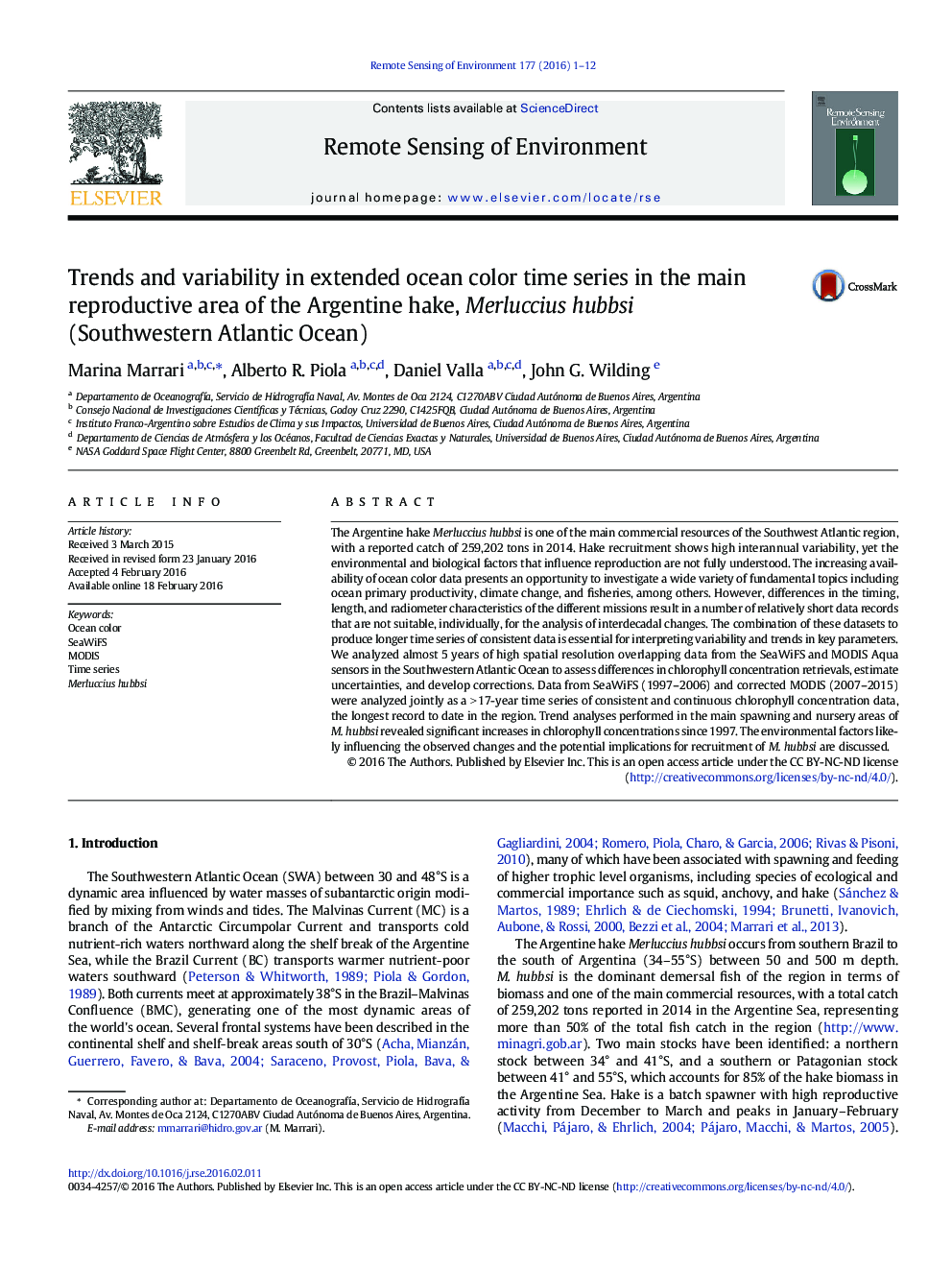| کد مقاله | کد نشریه | سال انتشار | مقاله انگلیسی | نسخه تمام متن |
|---|---|---|---|---|
| 6345407 | 1621223 | 2016 | 12 صفحه PDF | دانلود رایگان |

- 17Â years of ocean color satellite data in the Southwestern Atlantic were analyzed.
- The longest time series in the area was generated after combining data from 2 sensors
- The variability and trends in the main reproductive area of Merluccius hubbsi were examined.
- Trend analyses revealed increasing chlorophyll concentrations since 1997.
- The environmental controls and implications for hake recruitment are discussed.
The Argentine hake Merluccius hubbsi is one of the main commercial resources of the Southwest Atlantic region, with a reported catch of 259,202Â tons in 2014. Hake recruitment shows high interannual variability, yet the environmental and biological factors that influence reproduction are not fully understood. The increasing availability of ocean color data presents an opportunity to investigate a wide variety of fundamental topics including ocean primary productivity, climate change, and fisheries, among others. However, differences in the timing, length, and radiometer characteristics of the different missions result in a number of relatively short data records that are not suitable, individually, for the analysis of interdecadal changes. The combination of these datasets to produce longer time series of consistent data is essential for interpreting variability and trends in key parameters. We analyzed almost 5Â years of high spatial resolution overlapping data from the SeaWiFS and MODIS Aqua sensors in the Southwestern Atlantic Ocean to assess differences in chlorophyll concentration retrievals, estimate uncertainties, and develop corrections. Data from SeaWiFS (1997-2006) and corrected MODIS (2007-2015) were analyzed jointly as a >Â 17-year time series of consistent and continuous chlorophyll concentration data, the longest record to date in the region. Trend analyses performed in the main spawning and nursery areas of M. hubbsi revealed significant increases in chlorophyll concentrations since 1997. The environmental factors likely influencing the observed changes and the potential implications for recruitment of M. hubbsi are discussed.
Journal: Remote Sensing of Environment - Volume 177, May 2016, Pages 1-12